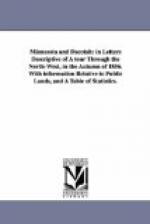Here the “selection” generally, and the “selection” by authority are each provided for eo nomine. It is obvious that the provision in the latter case is made for certainty only; since, by the general rules of statute construction, no ordinary claim of preemption could attach to reservations made by authority of the United States. The effective provision in the enactment quoted, must be selections not made by the authority of the United States.
In point of fact the provision was construed by the Department to include all voluntary selections: lands, says the circular of the General Land Office of July 8, 1838, “which settlers have selected with a view of building thereon a village or city.”
It seems to me that the same considerations which induced this construction of the word “selection” in the act of 1838, dictate a similar construction of the same word in the subsequent act. Besides which, when a word or words of a statute, which were of uncertain signification originally, but which have been construed by the proper authority, are repented in a subsequent statute, that is understood as being not a repetition merely of the word with the received construction, but an implied legislative adoption even of such construction.
II. The second question is of the construction of the act of 1844, supplemental to that of 1841; and as the construction of the elder derives aid from the language of the later one, so does that of the latter from the former. The question is divisible into sub-questions.
1. Does the phrase “that the entry (for a town-site) shall include only such land as is actually occupied by the town,” restrict the entry to those quarter quarter-sections, or forty acre subdivisions alone, on which houses have been erected as part of said town?
2. What is the meaning of the phrase in the act “legal subdivisions of the public lands,” in “conformity” with which the entry must be made?
I put the two acts together and find that they provide for a system of preemptions for, among other things, agricultural occupation, commercial or mechanical occupation, and municipal occupation.
In regard to agricultural occupation, the laws provide that, in certain cases and conditions, one person may preempt one hundred and sixty acres, and that in regard to municipal occupation a plurality of persons may, in certain cases and conditions, preempt three hundred and twenty acres. In the latter contingency, there is no special privilege as to quantity, but a disability rather; for two persons together may preempt three hundred and twenty acres by agricultural occupation, and afterwards convert the land into a town site, and four persons together might in the same way secure six hundred and forty acres, to be converted ultimately into the site of a town; while the same four persons, selecting land for a town site, can take only three hundred and twenty acres. In both forms the parties enter at the minimum price




